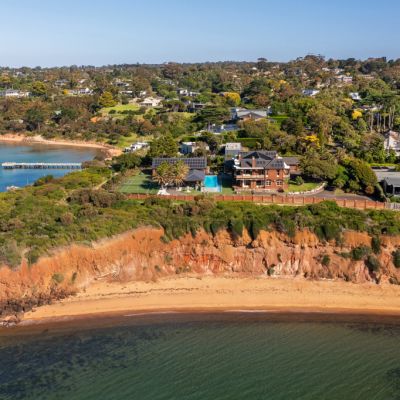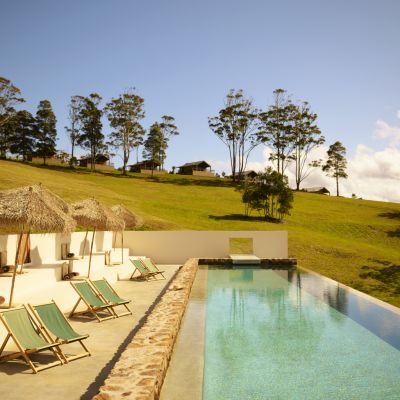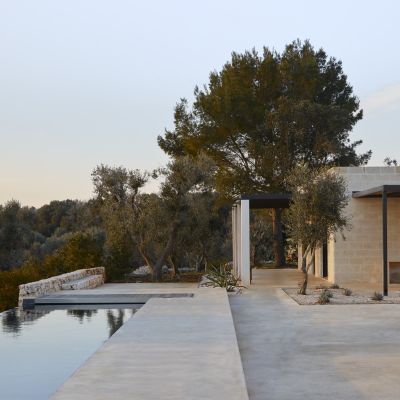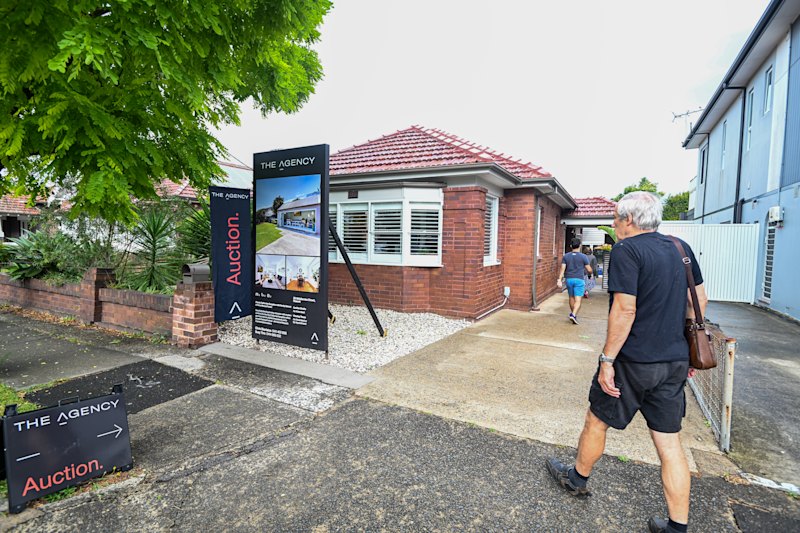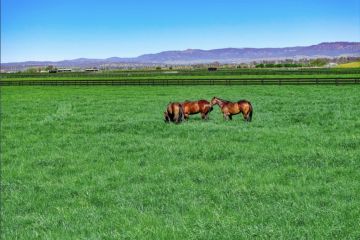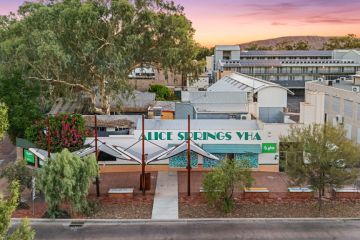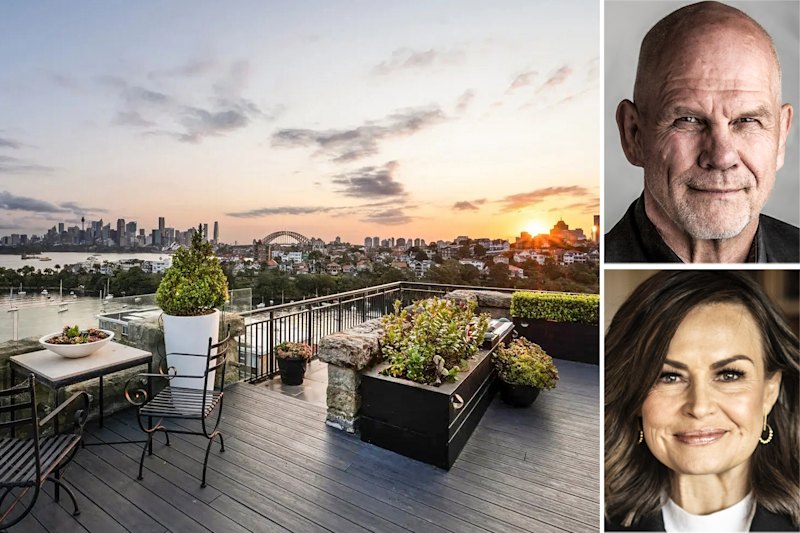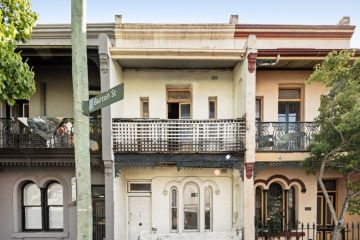Back in black: Byron hinterland farmhouse just listed for $12 million
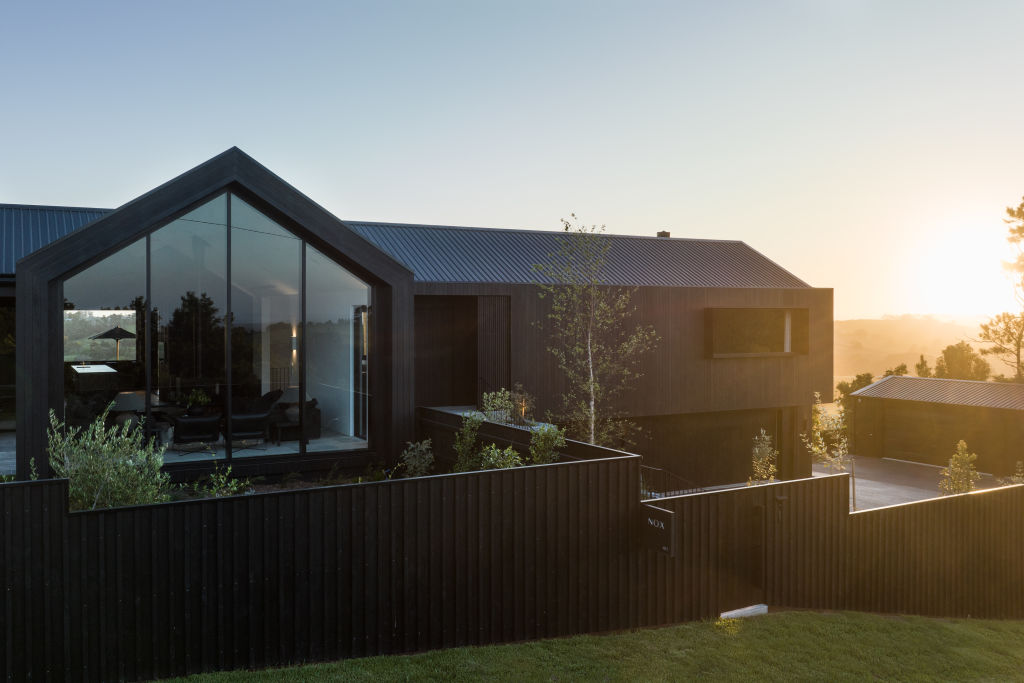
Black isn’t only back. For Jacqui Pearce, it’s front and centre … and then some.
The newly completed five-bedroom house she and her husband built for their family of five at Talofa, tucked up in the Byron hinterland, is black inside and out: black facades, black interior walls, black joinery, black furniture, black soft furnishings. Move from room to room, and black richly envelops every way you turn.
“I have a real love for New Zealand architecture and that black gabled farmhouse look, with a contemporary vibe,” confesses Pearce, who named the property Nox, Latin for night. “You similarly see it in Belgian farmhouses. It has a real emotive pull.”
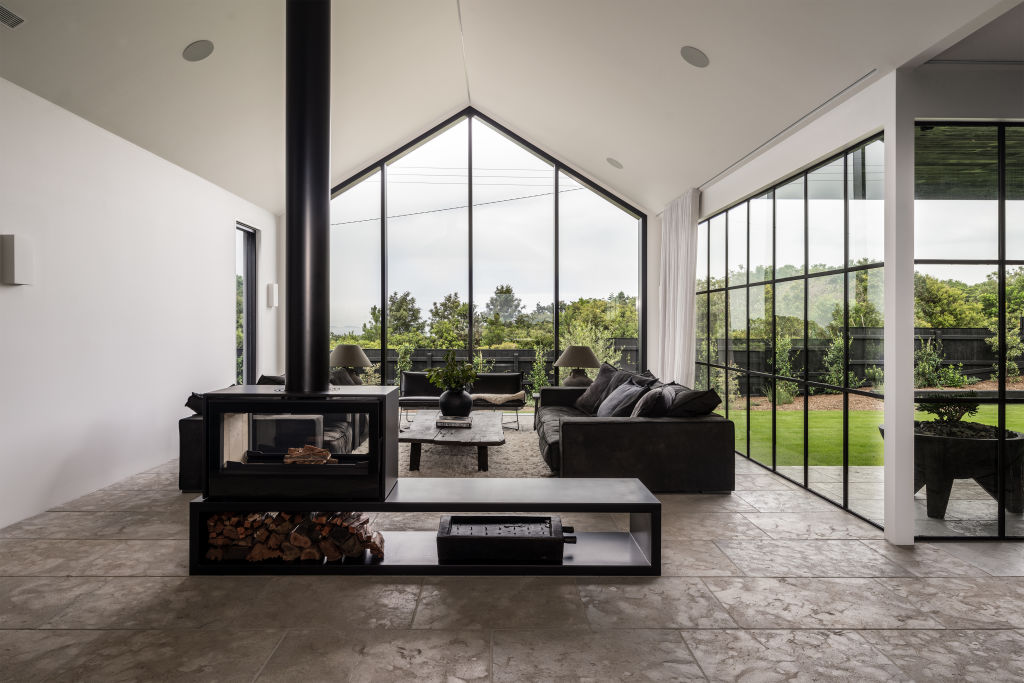
First, though, the Brisbane couple had to find the right block, which took a few years of searching in the Northern Rivers. With that box ticked, they approached local practice Davis Architects to build their family home, perched on a hill with sweeping views of lush green countryside.
Initially, they planned to renovate the existing house, an ordinary structure with a pitched roof, but soon realised their dream of dark soaring gables and moody mountain-like lodges required it to be built largely from scratch. “The project evolved,” says principal architect Ed Davis.
The easy part for the architects was orienting their design of intersecting gables to connect with the outdoors to take advantage of the bucolic vista – a centrally located kitchen spills onto outdoor dining and living patios, abutting a pool and spa.
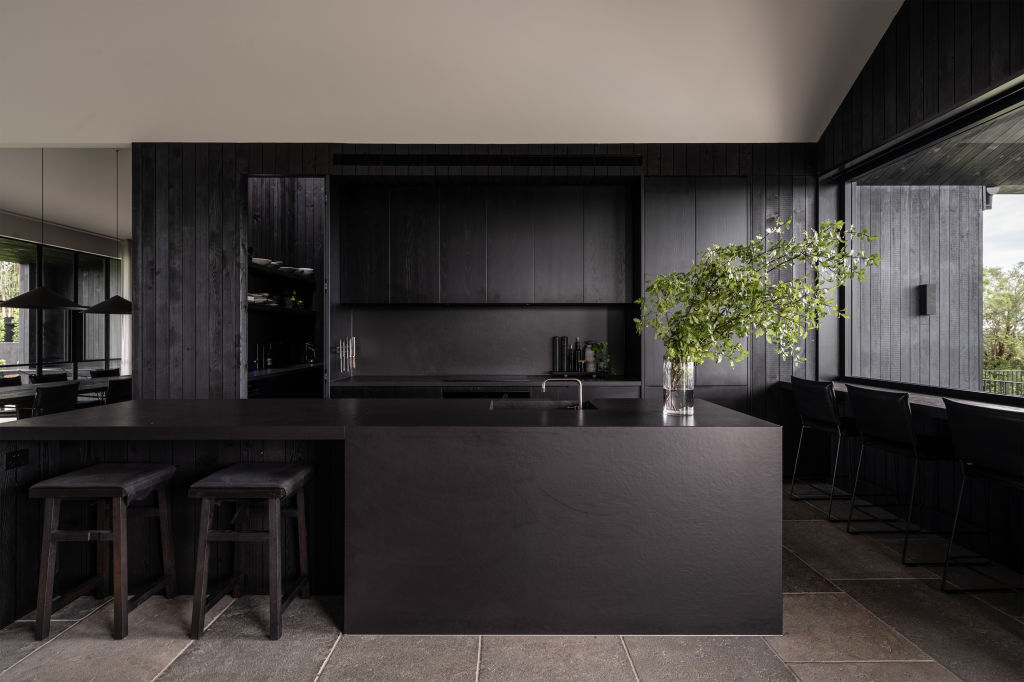
On either side, three of the five bedrooms overlook the rolling hills: two have viewing terraces, and the main bedroom suite has a window spanning almost the entire wall and a freestanding bath positioned for idle gazing. “As I see it, we have one manageable acre and 10,000 borrowed,” says Pearce.
Even on the other side of the house, terraces for another bedroom and dining provide indoor spaces access to a landscaped garden.
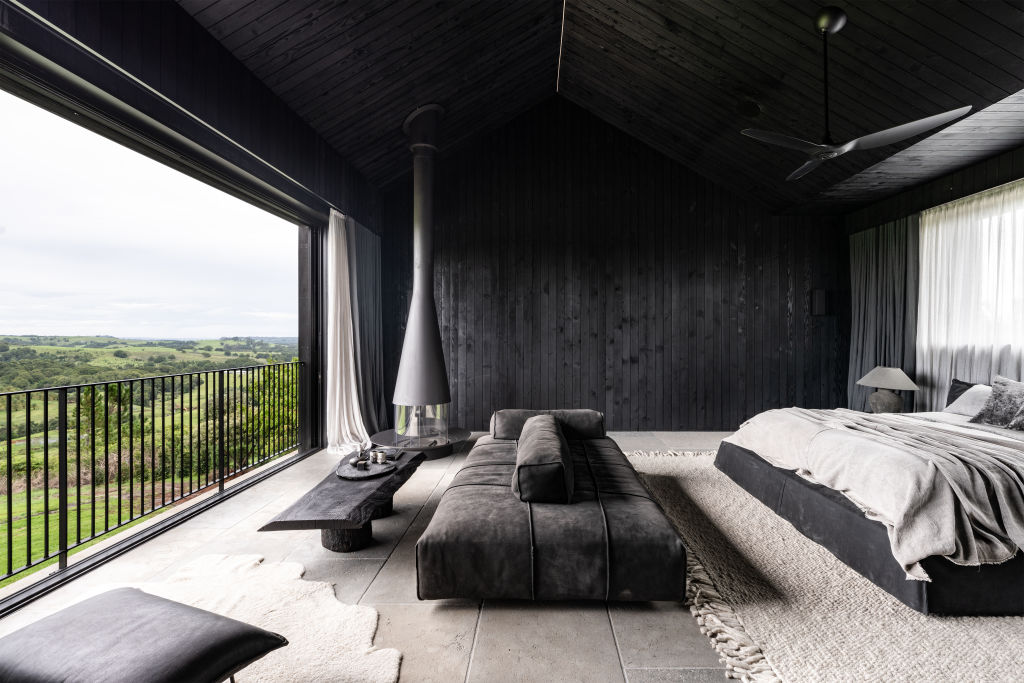
Better use also is made of the slope (previously an undercroft), with a lower level added below the main bedroom wing for a garage, media room (with views), gym (or fifth bedroom), laundry, a cellar, sauna and ice bath. “It had to be a family home first and foremost,” argues the project’s design architect, Nic Raczka (who has since left Davis Architects).
This meant shifting between grand gestures and architecture on a human scale. Raczka, for instance, points to the lower ceilings as you enter through the front and the approach to the bedroom suite before they “explode” up to 4.8 metres to maximise volume and views. Similarly, a snug spiral staircase from the lower ground floor has an overhead oculus.
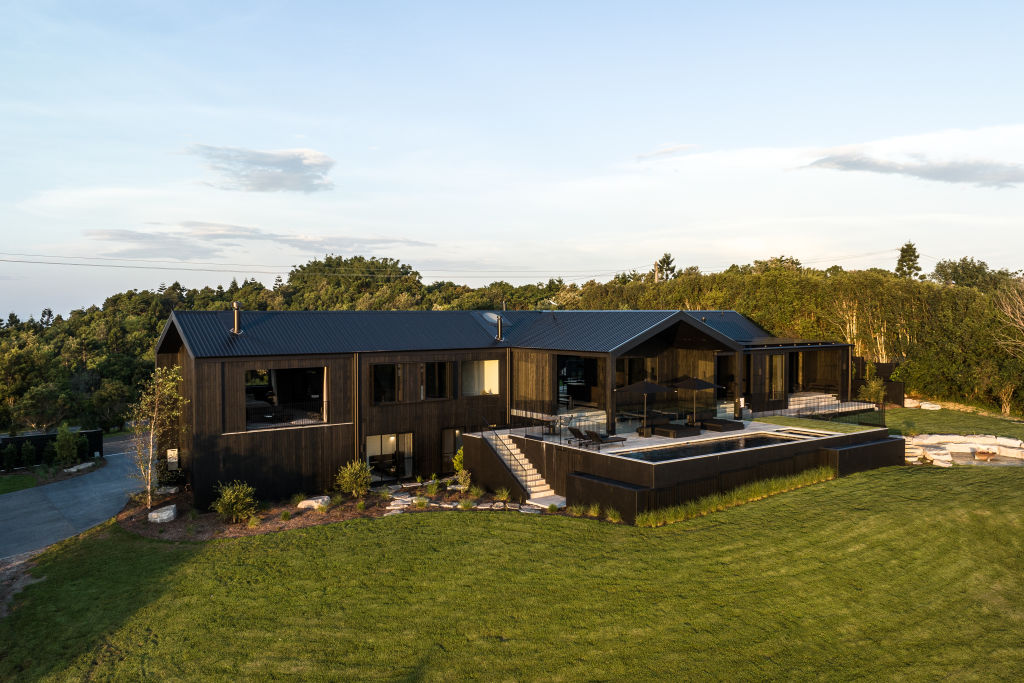
At the same time, there’s no escaping the blackness. “It looks so good against all the greenery of the countryside,” says Pearce. “I love that sense of rural without being rustic.” Raczka agrees: “We wanted the house to feel nestled in the landscape.”
When looking out, the darkened interiors also help frame the scenery, like it’s a living artwork, and instil calmness within. Pearce singles out the darkened shell of the 90-square-metre bedroom wing. “It’s my favourite place in the whole world,” she says. “It’s my sanctuary.”
Adding to this harmony is the highly textural nature of the black-stained rough-sawn ironbark cladding. At one point, there were thoughts of adopting the traditional Japanese charred-wood finish, known as shou sugi ban, but there were also concerns that the wood might flake. “Most people think it is,” laughs Pearce.
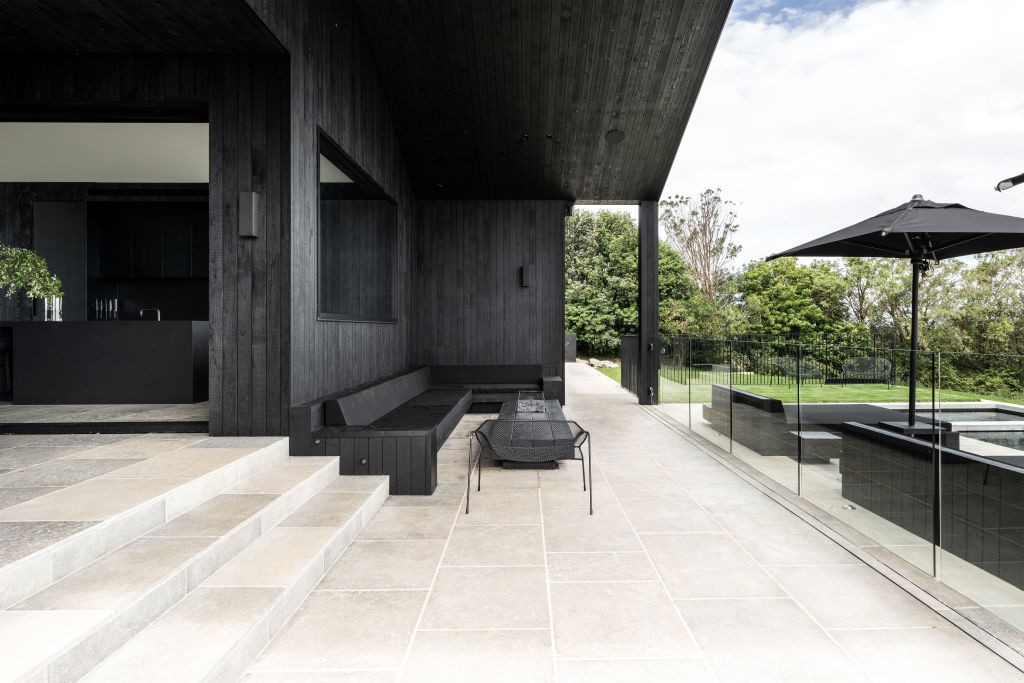
But there are other becalming textures, too: floors of distressed limestone, so you feel them underfoot, and bluestone in the bathrooms; and white Venetian plaster, which adds a softer touch, as do lighter-toned curtains and rugs.
In turn, these help to temper the black. So do the soaring walls of glass, which flood the interiors with natural light and add to the sense of space. It meant, too, only a minimal use of lighting. “I haven’t put up a single piece of artwork because the finishes and textures are the artwork,” says Pearce.
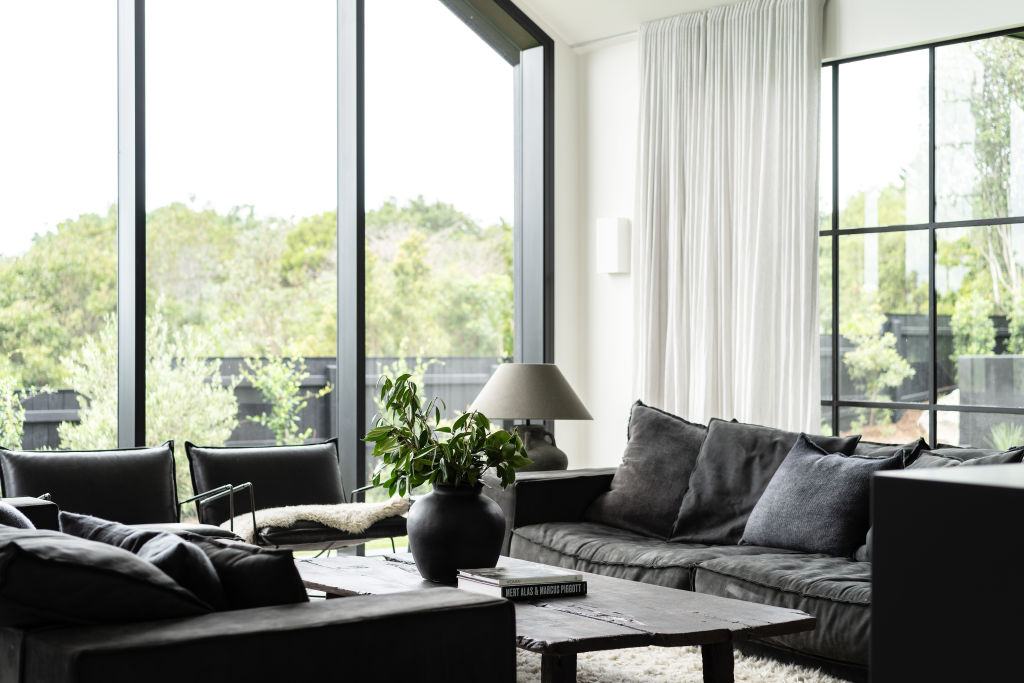
This helped Pearce create the clean look dear to her heart. So much so that she had much of the furniture built-in (what isn’t built-in was sourced by Huntress and Hound, who worked with Pearce on the interior design), and you won’t find skirting or architraves anywhere. “It’s all corner set, which emphasises the height and cleanness,” says Raczka.
Now, with the couple’s children flying the nest, the house may no longer be the family’s forever home, but a forever home it remains, nonetheless. “I wanted the house to be timeless in nature,” says Pearce. “Not reflective of a particular period of architecture.”
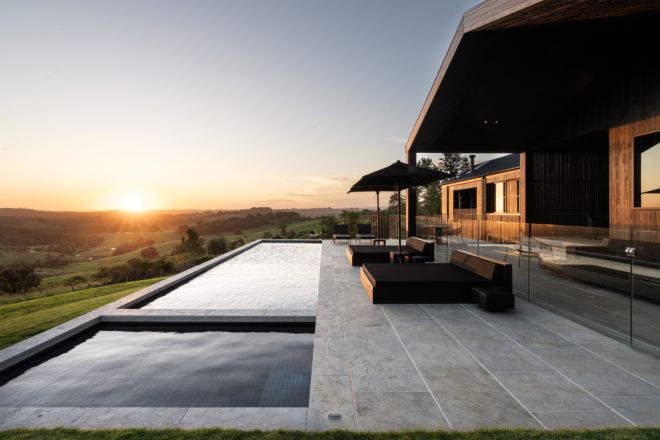
“It’s a spectacular house, unlike anything in the region. It feels as if it’s stood there forever, or for a very long time, at one with nature and its surroundings,” says selling agent Will Phillips of McGrath Byron Bay.
We recommend
We thought you might like
States
Capital Cities
Capital Cities - Rentals
Popular Areas
Allhomes
More
